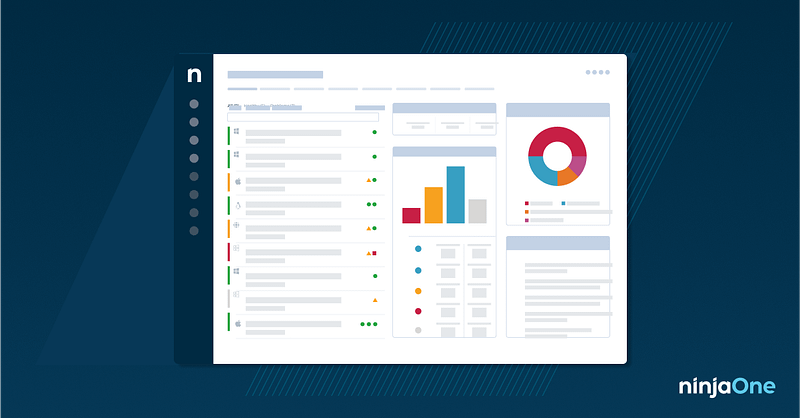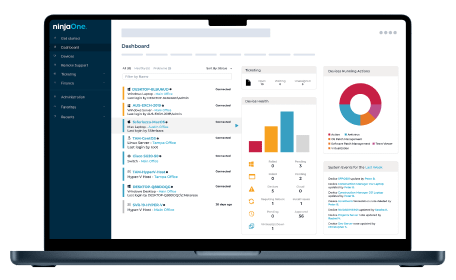End User Support for IT teams

Empowering End Users with Better Support
Increased productivity
Enhanced user satisfaction
Reduced operational disruptions
Improved IT resource allocation
Stronger security and compliance
Helping your users, every step of the way
Remote access tools
Ticketing and Helpdesk integration
Real-Time monitoring and alerts
Automated scripting and remediation
How Our Solution is Used
Customer service chats
Automated issue resolution with scripts
Device health monitoring
Software deployment and updates
Documentation
Empower your IT team with NinjaOne’s all-in-one solution for fast, reliable end user support!

End User Support FAQs
What is end user support?
In the IT industry context, end user support refers to the assistance provided by IT teams to help employees or customers to use technology, resolve technical issues, and maintain productivity. This includes troubleshooting hardware and software problems, providing guidance on using systems or applications, and ensuring that users can perform their tasks with minimal disruption. End user support is a key component of IT service delivery and plays a critical role in user satisfaction, operational efficiency, and business continuity.
What are the key components of end-user support?
End User support is not strictly aligned to standards like ITIL, as such, its components and implementation may vary depending on the organization’s context, maturity, or who provides the support. Here is a list of some common components of end used support:
- Remote Support Tools
Software that allows technicians to remotely access user devices to troubleshoot and resolve problems in real time. - Knowledge Base and Self-Service Portal
A repository of FAQs, how-to guides, and troubleshooting articles that empowers users to solve common issues on their own. - Incident Management
Processes for identifying, logging, diagnosing, and resolving unexpected disruptions in service or functionality. - User Communication and Feedback Channels
Mechanisms to keep users informed about ticket status, outages, or updates, and to gather feedback to improve service quality. - Monitoring and Alerting Tools
Systems that detect issues on endpoints (e.g., disk space, CPU usage) so IT can act proactively before users are affected. - Asset and Configuration Management
Keeping track of user devices, software, and configurations to provide context during support and streamline troubleshooting. - User Training and Onboarding Support
Guidance provided to help new users understand how to use IT systems effectively, including basic troubleshooting steps.
What is the difference between end-user support and service desk?
In the IT industry context, the difference between End-User Support and Service Desk lies in their scope and function within IT service management. While End-User Support is focused on assisting individual users with their technical issues, like troubleshooting hardware/software problems and guiding users on how to use systems. Service Desk has a broader and more strategic focus, acting as a single point of contact between IT and users for all IT-related inquiries and issues like Incident management, service request fulfillment, change management coordination, escalation handling, and communicating outages or planned maintenance.
Related Resources
IT Service Delivery: What It Is and Key Components
Essential NinjaOne Ticketing Automations To Get You Started
Learn common and helpful NinjaOne RMM ticketing automation tips you can use to help you get started.
The 6 Fundamental Steps in a Network Monitoring Process
Discover how you can improve operational efficiencies with a well-managed network while proactively maintaining a secure network.
